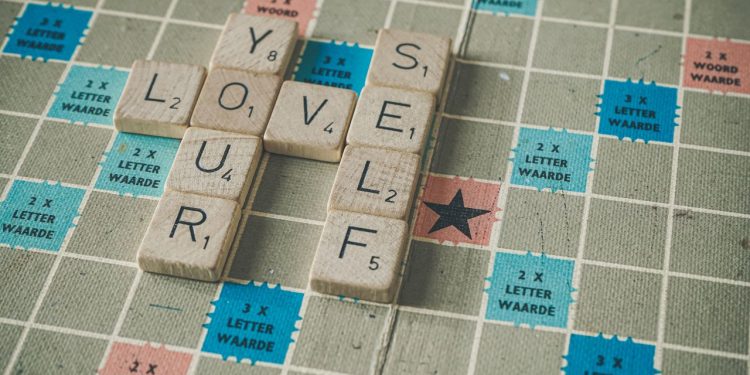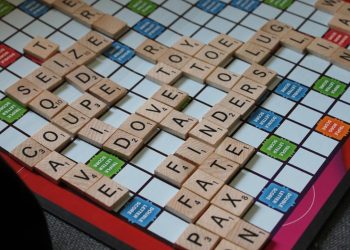Shoutout to all of you word game enthusiasts! Whether you are a casual player relaxing with a wizard’s game puzzle, or an individual who sees words as a serious challenge, there’s one thing every player has to work on- professionally scanning letters and combinations.
Imagine that out of the blue, a random set of letters gives rise to a different perception. It’s the “RTOE” situation where you can get TORE, ROTE and theoretically even TOER (not the best pun but works). Those moments get fun if it’s a toes crossword.
Jokes aside, getting better at puzzles requires more than simply knowing a ton of words. The trick lies within how to piece all the pieces of the puzzle together and what ways can be utilized to get the best combinations. There are always contours to look around.
In this guide, we’ll take care of effectively spotting clues and letter combinations both in crosswords and word searches and even within online word games like Puzzle Jam.
Let us begin!
First, Understand the Type of Word Puzzle You’re Playing
Not all word puzzles are created equal. Each type has its own logic, rules, and “tells.” Here’s a quick breakdown:
- Crosswords: Clues + a grid + intersecting answers. You’ll need both general knowledge and language flexibility.
- Word Searches: All about spotting whole words hidden in a grid. The words can be vertical, horizontal, diagonal, or even backwards.
- Anagram Puzzles: You’re given a bunch of jumbled letters, your job is to find all possible word combinations.
- Word Ladders: Change one letter at a time to go from one word to another.
- Online Games (like Puzzle Jam!): These mix everything, timed challenges, anagrams, hidden words, and sometimes even trivia-style clues.
Step One is knowing what rules you’re playing with. Your clue-spotting approach will depend on the puzzle format.
Step-by-Step: How to Spot Clues Like a Word Sleuth
Let’s break it down. Whether it’s a crossword or a timed quiz game, clues often fall into repeatable patterns.
1. Look for Obvious Word Structures
Our brains love patterns, and so do word puzzles.
When looking at a jumbled set of letters or clues, start by trying to build basic word structures:
- Common prefixes: un-, re-, dis-, pre-, in-, over-
- Common suffixes: -ing, -ed, -ly, -ion, -ment
- Common roots: port, act, form, view, spect
Example:
Given letters: R T A C E
Try common structures:
- Prefix “re” → “react”
- Suffix “-ed” → “traced”
- Combo like “act” → “trace”, “crate”, “caret”
You’d be surprised how many words you can uncover just by identifying common English building blocks.
2. Play the Vowel-Consonant Game
Vowels (A, E, I, O, U) are your glue. Consonants are your framework. Every legit word will need at least one vowel (unless we’re talking abbreviations like “TV” or weird crossword exceptions).
When faced with jumbled letters:
- Count how many vowels vs consonants you have.
- Try alternating them to form pronounceable sounds.
Let’s try: Letters = B L N E A
- We’ve got vowels: A, E
- Consonants: B, L, N
- Try putting a vowel in the middle: BAN = BAN
- Mix it again: LAN = LAN, BEN = BEN
Soon enough you’ll get: “blane” (a surname), “banal,” “belan” (might be obscure), or “enable.”
Even if you don’t know the word, your brain gets better at forming possible combinations the more you play.
3. Use Letter Pair Logic
Certain letters love being together. You can call them letter buddies.
Common pairs and clusters:
- TH, SH, CH, PH, WH
- TR, BR, ST, SL, CL, PL
- NG, CK, ND, NT
Start experimenting by placing these together in different positions within the letter set.
Example: With letters S R T I H
Spot the “TH” combo → Try “shirt,” “this,” “hits,” “stir”
Letter clusters are the cheat code to cracking harder puzzles faster.
4. Use the Clue Tone (Especially in Crosswords)
Crossword clues aren’t just definitions, they often play mind games with you.
Here’s how to spot what the clue is really asking:
- If it’s in quotation marks → It’s likely a spoken phrase.
“Go away!” → “SHOO” or “SCRAM” - Ends in a question mark? → It’s a pun or wordplay.
Crib sheet? → “MAP” (as in “sheet for a baby’s crib” or a “cheat sheet”) - Abbreviations in the clue → Answer is probably abbreviated too.
Dr. helper (abbr.) → “RN”
Get familiar with these sneaky clue types, and suddenly those cryptic crosswords feel way less scary.
Mastering Letter Combinations Like a Puzzle Pro
Once you’ve scanned the clues, it’s time to arrange letters like a word wizard. Here’s how to speed that up:
5. Visualize the Letters in a Circle
Sometimes, seeing letters in a linear row doesn’t help. That’s why circular layouts (like in Puzzle Jam) are brilliant. You can literally see more options when you break out of the line.
Take the letters E, L, T, A, R
If you place them in a circle and start tracing patterns, you’ll likely find:
- LATER
- ALTER
- ALERT
- ARTEL
- RATEL
Let your finger follow possible combos on the screen or mentally trace them. It helps unlock those “Aha!” moments.
6. Use the “Fix a Letter” Technique
Choose one letter and mentally fix it in the first position. Then rotate the rest.
Example: Letters = P A R T
Fix “P” → Try P + ART, PAR, PAT, PAN, PA…
Fix “T” → TARP, TRAP, TAP, TAR…
Doing this forces you to think in systems rather than randomly guessing.
7. Chunk Letters into Real Words
Try to break your letter bank into recognizable mini-words.
Example: Letters = T R I C E
You see “ICE” → what can go before it? TRICE
You see “RICE” → what goes before it? Try “T” or “C”
Look for smaller real words and build outwards from them.
8. Set a Time Limit (Gamify It!)
Give yourself a mini deadline. Pressure often forces your brain to fire up creativity.
Set a timer: “I’ll find 5 words in 60 seconds.”
Or better yet… hop into a game like Puzzle Jam where the clock is ticking and your brain stays in high-performance mode.
Bonus Pro Tips for Word Puzzle Domination
Here are some extra nuggets that’ll boost your puzzle-solving powers:
- Practice makes patterns visible: The more you play, the faster you recognize common structures.
- Read more: Seriously. Reading fiction, articles, and even random product labels helps you build a richer word bank.
- Play reverse: Take words you know and try to break them into possible anagram combinations. It trains your brain to think both forwards and backwards.
- Use a “joker” letter: If you’re really stuck, try imagining an extra vowel or consonant in the mix and see if a new word emerges.
- Stay relaxed: Brain freeze is real. Step away for a few seconds if you’re stuck. Sometimes, your subconscious keeps solving in the background.
Ready to Put Your Skills to the Test?
All this talk about letter combos, clues, and patterns, now it’s your turn to take action.
If you’re ready to sharpen your word-solving skills in a super fun, fast-paced environment, then Puzzle Jam is calling your name.
Puzzle Jam is not just any word game. It’s your daily brain boost, packed with quizzes, challenges, and clever wordplay that keeps you on your toes. Whether you’re in line for coffee or chilling before bed, it’s the perfect way to turn spare moments into smart fun.
- Challenge yourself
- Climb the leaderboard
- Train your brain, one puzzle at a time
Play Puzzle Jam Now – and let the wordplay begin!
Final Words
Spotting clues and letter combinations in word puzzles isn’t just about being “smart.” It’s about building the right habits, recognizing patterns, and keeping your brain engaged.
Now that you’ve got the tools, it’s time to level up your puzzle game. Start slow, stay consistent, and most importantly, have fun with it.
See you on the leaderboard at Puzzle Jam! 😉














